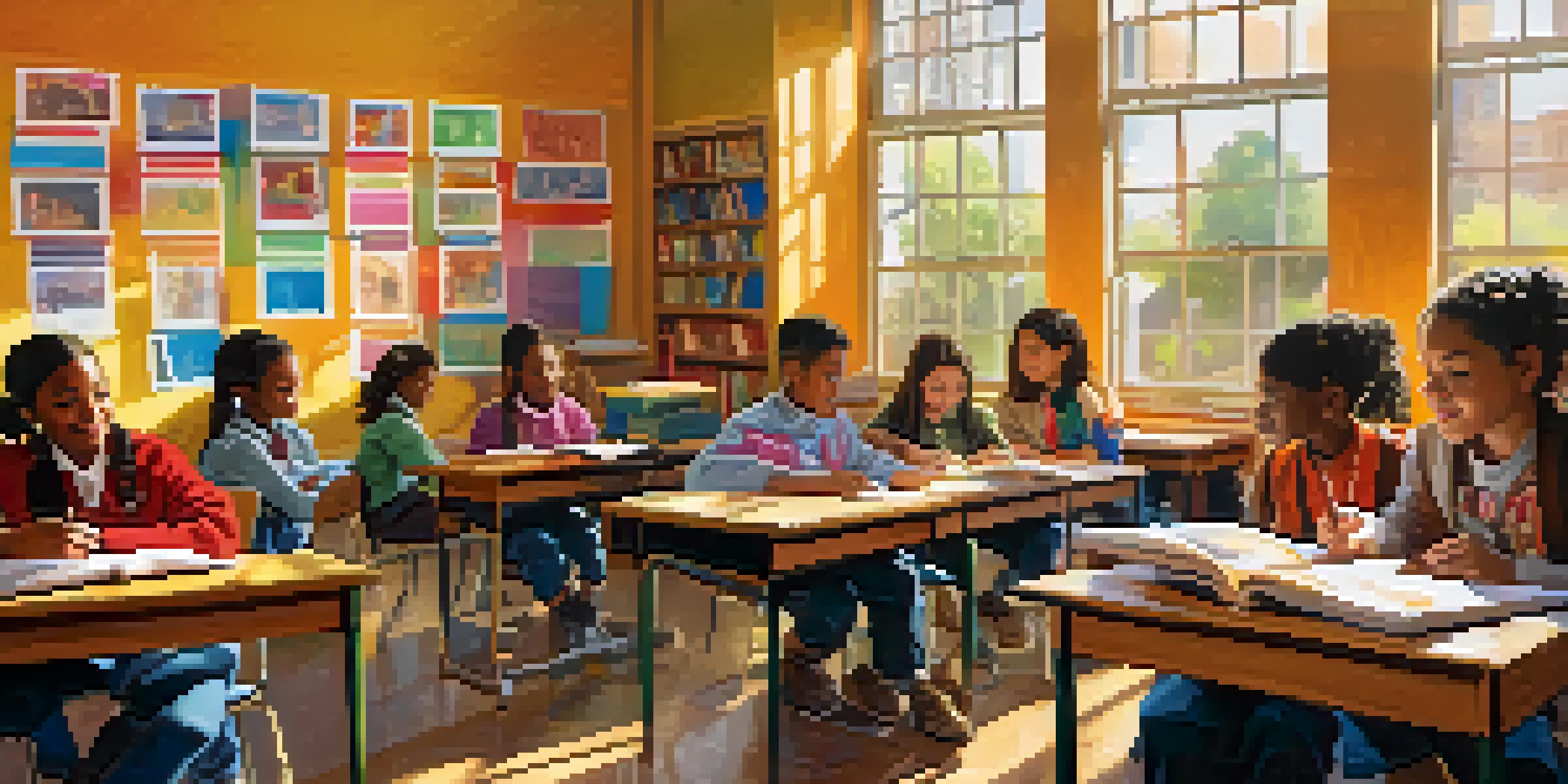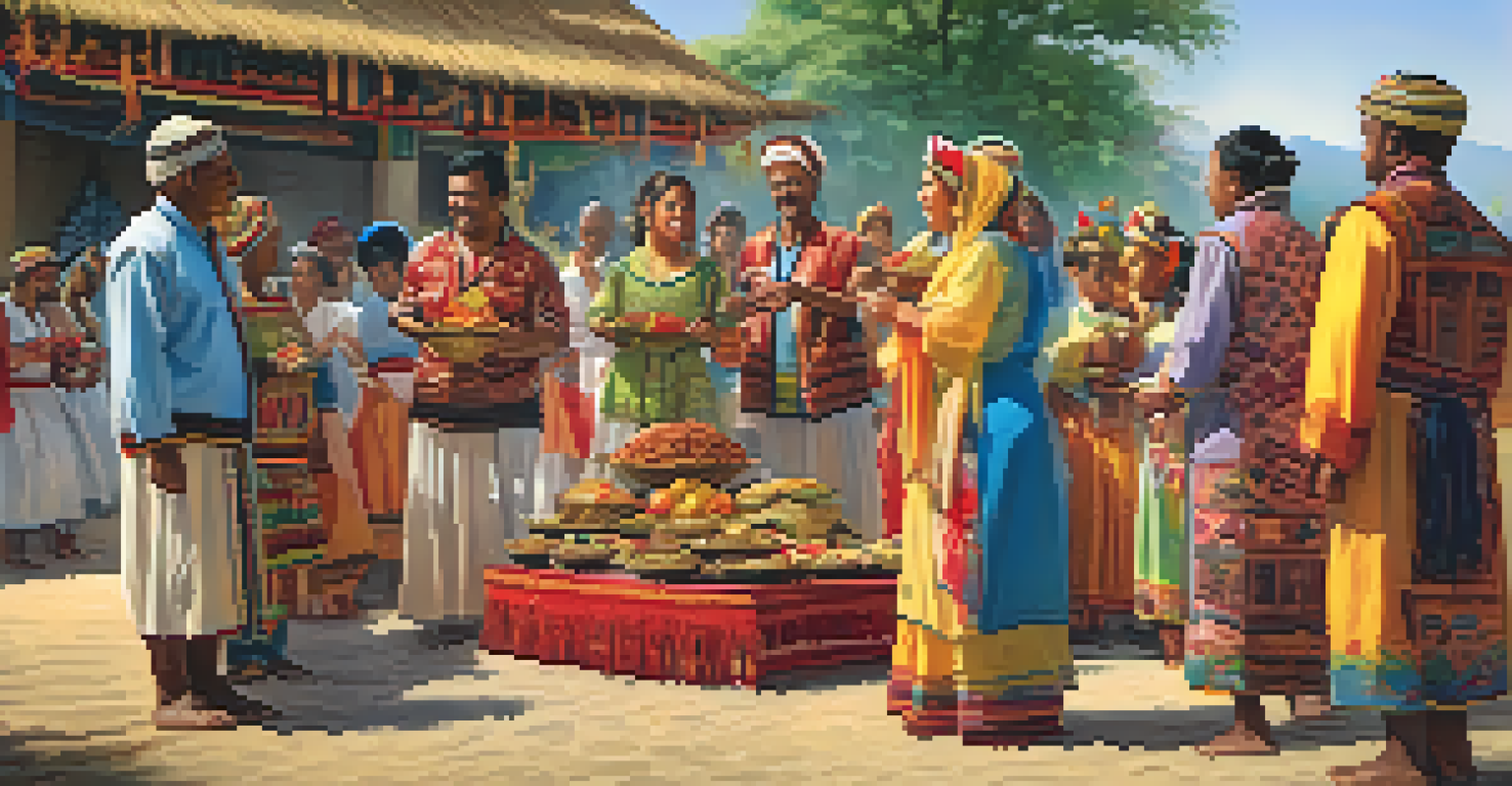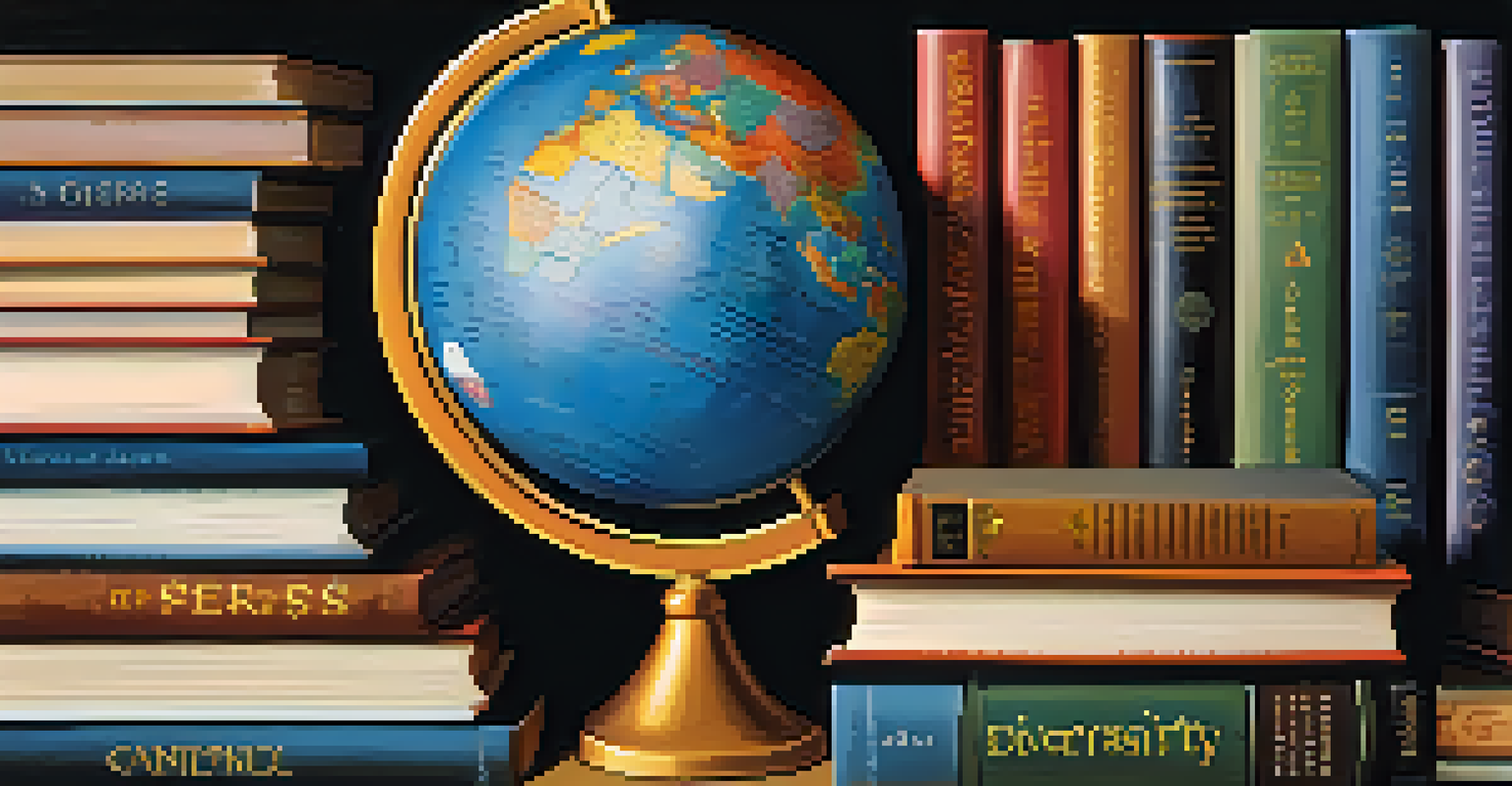Exploring Multicultural Education for Global Competence

Understanding the Essence of Multicultural Education
Multicultural education is more than just a buzzword; it's a philosophy that promotes diversity and inclusion in learning environments. It aims to recognize and respect the various cultural backgrounds of students, nurturing a sense of belonging. By integrating different perspectives into the curriculum, educators can create a richer learning experience that reflects the world’s complexity.
Education is the most powerful weapon which you can use to change the world.
Imagine a classroom where students learn not only about their own culture but also explore the traditions, histories, and contributions of others. This approach fosters empathy and understanding, allowing students to appreciate the richness that diversity brings. It’s like a tapestry, where each thread contributes to a beautiful and intricate design.
In essence, multicultural education prepares students for a diverse society. It equips them with the skills needed to engage effectively with people from various backgrounds, promoting social cohesion and equality. Ultimately, it lays the groundwork for global competence, which is essential in today’s interconnected world.
The Role of Educators in Multicultural Education
Educators play a crucial role in the implementation of multicultural education. They are not just facilitators of knowledge but also cultural ambassadors who can guide students through the complexities of diversity. By fostering an inclusive classroom environment, teachers can encourage open dialogue and critical thinking among students.

Consider a teacher who incorporates stories from different cultures into their lesson plans. This not only enriches the curriculum but also helps students see the world through different lenses. Such practices can spark curiosity and ignite meaningful conversations, making learning more engaging and relevant.
Promoting Diversity in Education
Multicultural education fosters an inclusive learning environment that respects and integrates diverse cultural backgrounds.
Moreover, educators must be aware of their own biases and strive for cultural competence. This involves continuous learning and self-reflection to ensure they are providing a balanced perspective. By modeling these attitudes, teachers can inspire students to embrace diversity and develop their own global competence.
Curriculum Design for Multicultural Education
Designing a multicultural curriculum requires intentionality and creativity. It's about weaving diverse narratives and perspectives into existing subjects rather than treating them as add-ons. By including a variety of voices, educators can create a more accurate representation of the world.
Diversity is not a reason for division; it is a reason for celebration.
For example, in history classes, instead of focusing solely on dominant narratives, teachers can highlight contributions from marginalized groups. This not only enriches students' understanding but also empowers those whose stories have often been overlooked. It's like shining a light on hidden gems that deserve recognition.
Furthermore, a multicultural curriculum encourages critical thinking and helps students connect personally with the material. When students see themselves and their cultures reflected in what they learn, they are more likely to engage deeply and develop a sense of ownership over their education. This connection is key to fostering global competence.
Benefits of Multicultural Education for Students
The benefits of multicultural education for students are vast and varied. Firstly, it promotes cognitive skills by encouraging students to think critically about different viewpoints. This not only enhances their academic performance but also prepares them to tackle real-world challenges with a well-rounded perspective.
Additionally, multicultural education fosters social skills by teaching students how to communicate and collaborate with peers from diverse backgrounds. These skills are essential in a globalized world where teamwork and cross-cultural understanding are paramount. It's akin to learning a new language; the more you practice, the more fluent you become in navigating diverse environments.
Educators as Cultural Ambassadors
Teachers play a pivotal role in implementing multicultural education by guiding discussions and promoting cultural competence.
Moreover, students who engage with multicultural education often develop a stronger sense of identity and belonging. They learn to appreciate their own cultural heritage while also valuing the experiences of others. This dual appreciation is crucial for building inclusive communities and fostering global citizenship.
Challenges in Implementing Multicultural Education
While the benefits of multicultural education are clear, several challenges can hinder its implementation. One major obstacle is the lack of resources and training for educators. Many teachers feel unprepared to address cultural differences or may not have access to diverse materials that reflect a global perspective.
Another challenge is the potential resistance from parents or community members who may not fully understand the importance of multicultural education. This resistance can stem from fear or misconceptions about what it entails. It’s essential to engage these stakeholders in meaningful conversations to foster a shared understanding.
Additionally, systemic issues within educational institutions can pose barriers. For instance, standardized testing often emphasizes a narrow set of knowledge that may not account for multicultural perspectives. Addressing these challenges requires a collective effort from educators, administrators, and communities to advocate for more inclusive practices.
The Importance of Global Competence in Today’s Society
In our increasingly interconnected world, global competence is more important than ever. It refers to the ability to navigate and engage effectively with diverse cultures, which is essential in both personal and professional contexts. As globalization continues to shape our society, being globally competent is no longer optional; it’s a necessity.
Consider the workplace as an example. Employers today value candidates who can collaborate with international teams and understand varying cultural norms. Individuals with global competence are better equipped to adapt to different environments and communicate effectively across cultures, making them invaluable assets in any organization.
Building Global Competence
Global competence is essential for navigating diverse cultures and is crucial for both personal and professional success in today's interconnected world.
Moreover, global competence extends beyond the workplace. It fosters a sense of responsibility towards global issues, encouraging individuals to become informed and active global citizens. This awareness is crucial for addressing challenges such as climate change, inequality, and social justice, ultimately contributing to a more equitable world.
Strategies to Foster Multicultural Education and Global Competence
To effectively foster multicultural education and global competence, schools can implement several strategies. First, incorporating experiential learning opportunities, such as cultural exchanges or field trips, can immerse students in diverse environments. These experiences provide firsthand insights into different cultures, making learning more impactful.
Second, encouraging student-led initiatives can empower young people to take charge of their learning. Projects that focus on community service or cultural celebrations allow students to engage actively with their peers and the broader community. This not only builds leadership skills but also fosters a sense of belonging and pride in their cultural identities.

Finally, schools should prioritize ongoing professional development for educators. Providing training on cultural competence and inclusive teaching practices equips teachers with the tools they need to create a supportive learning environment. By investing in educators, schools can cultivate a culture of inclusivity that ultimately benefits all students.